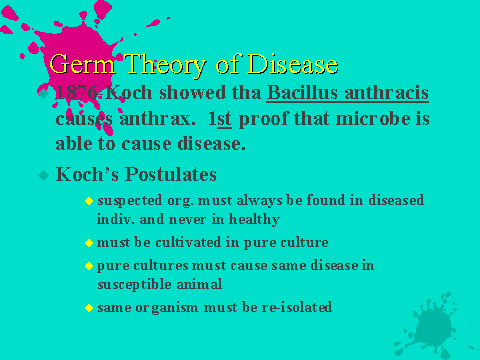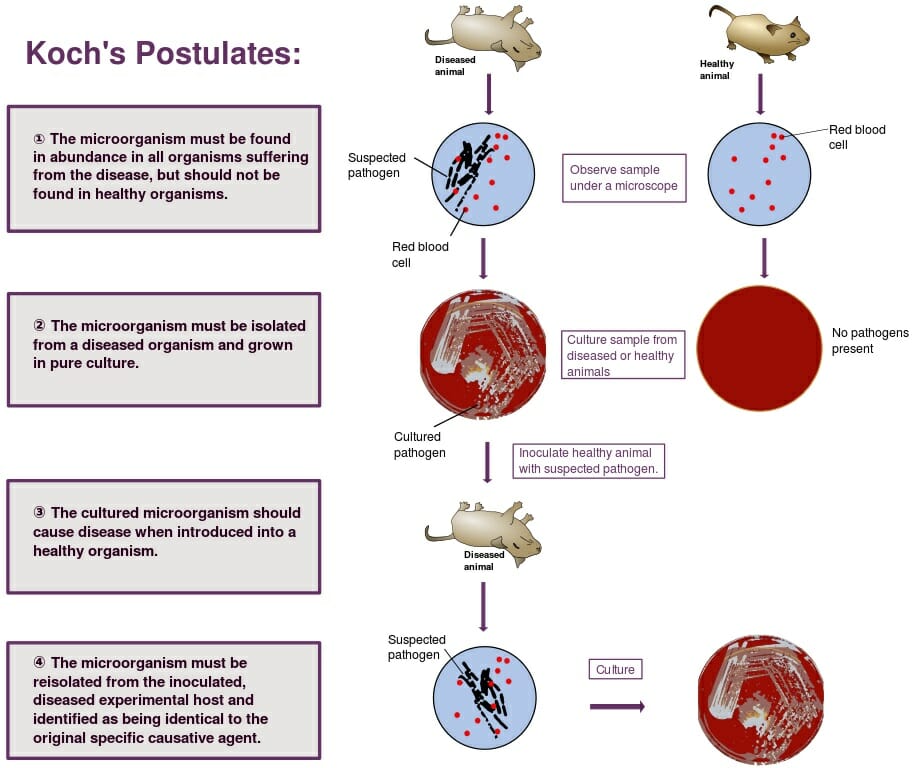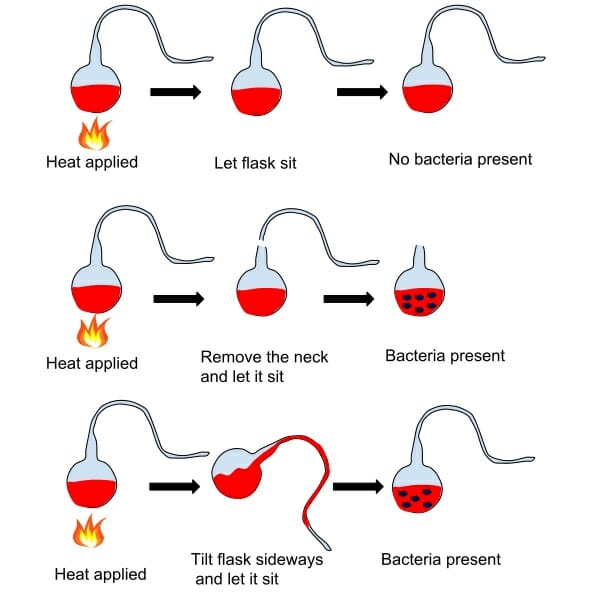Describe the Germ Theory of Disease
It accords with the basic facts that infection without an organism is impossible and that transmissible organisms can cause disease. Germ theory in medicine the theory that certain diseases are caused by the invasion of the body by microorganisms organisms too small to be seen except through a microscope.
The French chemist and microbiologist Louis Pasteur the English surgeon Joseph Lister and the German physician Robert Koch are given much of the credit for development and acceptance of the.

. Reproduce disease by injecting the organism into a suitable recipient 4. The miasma theory was popular for a very long time. The French scientist Louis Pasteur speculated that the spread of microorganisms called germs in the body could explain infectious disease.
1857 Louis Pasteur bacteria cause diseases in wine. Starting from the unproved theories of contagiousness we move on to miasma theory contagion theory and spontaneous generation theory up to the revolutionary germ theory of disease transmission. Germ theory The theory advanced by Louis Pasteur and widely accepted in mainstream medicine that all infections are caused by microbes.
The germ theory has become a. Theory of epidemiological triangle. A theory in medicine.
The bodys reaction to infection is called a disease. Definition of germ theory. These diseases are called infectious diseases.
Such microorganisms can consist of bacterial viral fungal or protist species. Until the germ theory was accepted many people believed disease was a punishment for bad behavior. A good basic on text on this is Stephen Jay Goulds article What is Science.
Grow in culture 3. 1867 Joseph Lister antiseptic surgery. Louis Pasteur Discovers Germ Theory 1861.
The Germ theory of disease is a theory in biology. This was known as the Germ Theory of Disease. Infections contagious diseases and various other conditions result from the action of microorganisms.
When the French chemist Louis Pasteur discovered. Germ theory of disease is based on the concept that many diseases are caused by infections with microorganisms typically only visualized under high magnification. The germ theory has been questioned by some practitioners of alternative medicines who may subscribe to the belief that infections only occur when the immune system is compromised.
In other words the germ is that which gives rise to the development of disease. Pasteur stipulated that bacteria caused infection and disease. Louis Pasteur Joseph Lister and Robert Koch are the developers of the germ theory.
The germ theory of diseaseinfectious disease is primarily caused by transmission of an organism from one host to anotheris a gross oversimplification. This refers to one to one relationship between the causative agent and disease. Up to 24 cash back Before Germ Theory.
The germ theory states that small organisms cause a reaction in the body of those who are infected. He proved that food spoiled because of contamination by invisible bacteria not because of spontaneous generation. Additional diseases such as peptic ulcer and some types of cancer are still being traced to infectious microbe species.
According to this theory there is one single specific cause of every disease. Before Louis Pasteur popularized the idea of germ theory people both scientists and laymen alike had very different ideas about how disease was spread and what caused it. Here are the three most popular ones from before Pasteurs time.
This theory explains the origin of infectious-communicable diseases. According to the modern germ theory of disease infectious diseases are caused by the presence of pathogenic microorganisms within the body. 1834 Bossi silkworm disease fungus.
During his experiments in the 1860s French chemist Louis Pasteur developed modern germ theory. 1846 Berkeley potato blight fungus. GERMA disease-causing organism such as a bacteria parasite or virus usually single celled.
Overcoming Disease Until the 20th century it was common to lose a child to disease. Many diseases are caused by microorganisms such as bacteria viruses protozoa or fungi according to the germ theory. From miasma to germ theory we trace the evolution of conceptions in infectious disease transmission.
Following are some important points. The one pathogen to one disease paradigm was developed based on the germ theory of disease that was formulated by Robert Koch the late 19th century and shaped the development of diagnostic microbiology in medicine. Germ Theory of Disease.
Kochs motivation was the need to discover whether bacteria caused illnesses. Until the germ hypothesis was developed the Miasma theory was popular and widely accepted. The germ theory states that certain diseases are caused when microorganisms invade the body.
But it does not explain the exceptions and anomalies. Isolate the organism from every case 2. Although he never tested the theory Pasteur suggested that a disease might be controlled by exposing the wound to germ-killing chemicals.
1846 Ignaz Semmelweis hand washing in hospitals. It says that small organisms called germs also known as microbes cause some diseases. The German doctor built on Louis Pasteurs work concerning germ theory where he used certain experiments to determine whether Bacillus anthracis a bacteria was the cause of anthrax.
Robert Koch described the steps of infectious disease in 1876 after the work of many other scientist when he used them to prove that Bacillus anthracis was the cause of anthrax. Germ theory is one of these- few would debate that germs cause disease but failing to recognize that it is a theory is a lazy use of scientific terms that twists the truth regarding the status of the explanation.

Germ Theory Of Disease Definition History And Quiz Biology Dictionary

Germ Theory Of Disease Definition History And Quiz Biology Dictionary

Comments
Post a Comment